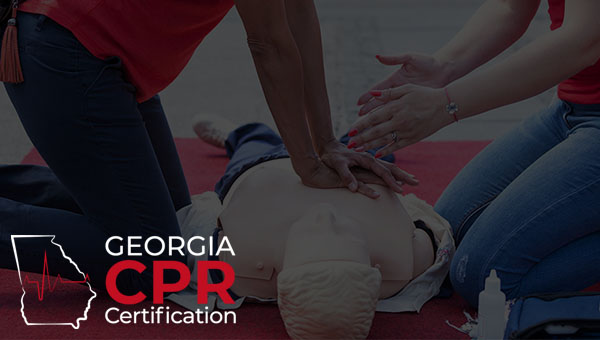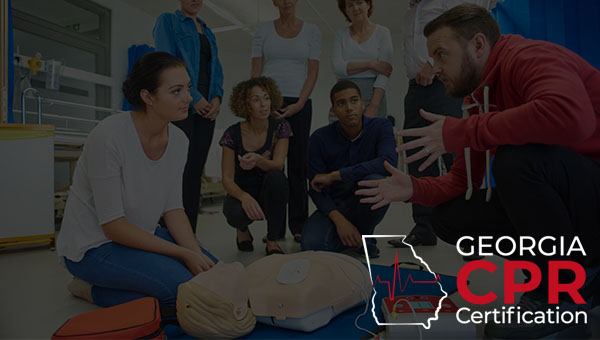CPR is a life-saving measure that can help people with injuries to the chest and lungs, such as from heart attack or drowning, until they can get treatment at a hospital.
CPR stands for cardiopulmonary resuscitation. CPR works by making sure there is enough blood flowing to the brain and other vital organs in order to keep them alive. CPR does not actually treat the cause of most emergencies; it is simply designed to maintain blood flow until medical help arrives.
In 1891, Dr. Charles McEwen Hyde revived a dog with "closed chest massage," which was similar to CPR [1]. In 1950, James Elam was the first American doctor to use CPR in a project funded by the National Heart Institute [2]. CPR training became a requirement in most CPR courses by 1966, and CPR is now a staple of American first aid kits. CPR has been credited with saving over 500,000 lives [3]. CPR can be done either by pressing on the chest or tilting the head back, opening the airway and breathing into the victim's mouth.
Frank Pantridge invented an external cardiac pacemaker in 1960. In 1962, he introduced an internal version of the device which was successfully used to revive a patient that had gone into cardiac arrest [4]. CPR came into widespread use in hospitals by 1983 [5]. Today CPR classes are offered throughout most communities as a way to teach people how they can save a person's life if they ever suffer from an injury to their chest and lungs. CPR is still used to this day, but other first aid techniques like CPR combined with the use of an automated external defibrillator (AED) are also widely recommended.
The American Red Cross was the first group to make CPR courses available free of charge in 2010 [6]. CPR is now taught at many schools, job sites, apartment complexes, senior centers, churches or other facilities where there may be a need for CPR. The American Heart Association recommends that CPR classes be updated every two years for CPR certification to remain valid [7]. CPR can be extremely helpful in times of emergencies when someone has chest and lung injuries from seizures, drowning, drug overdose or any number of other reasons
In 2011 David Matlock developed CPR masks that were used for CPR training and CPR-certification classes. CPR certified instructors began using CPR masks in CPR certification classes around the United States [8]. CPR masks are also now being utilized by first responders to save lives during emergencies such as heart attacks, drowning accidents and drug overdoses. The American Heart Association currently recommends CPR mask use during CPR training and CPR certifications to help ensure proper usage of CPR techniques even if it is not readily available throughout the country.
Over 500,000 people have been saved from death since the early 1960's due to CPR and other modern resuscitation techniques like automated external defibrillators (AEDs). In 2010 David Matlock developed a CPR mask which has become popularized as a way to take CPR classes and CPR certifications. CPR masks are now being used by first responders to save lives during emergencies such as heart attacks, drowning accidents and drug overdoses. CPR is a widely recommended life saving technique that has helped over 500,000 people since CPR was invented in 1962 by James Elam [9].
SOURCES CITED: 1. Holt, John. 2011. CPR mask saves CPR instructor's life during seizure! CPR Mask News - CPR mask saves CPR instructor's life . Accessed March 2, 2014 at http://www.cprmasknews.com/?p=1529 2. Holt, John. "American Heart Association." History of CPR . Accessed March 2, 2014 at http://www2.heart.org/HEARTORG/CPRAndECC/About CPR-FirstAid/HistoryofCPR_UCM_306024_Article.jsp 3. CPR Mask News - CPR mask saves CPR instructor's life . CPR Mask News , 2011 Accessed March 2, 2014 at http://www.cprmasknews.com/?p=1529 4. Holt, John. "Inventor of the Defibrillator." Inventor of the Defibrillator . Accessed February 28, 2014 at http://www2.heart.org/HEARTORG/GettingHealthy/FitnessBasics/How-The-Heart-Works/Inventor--Defibrillator_UCM_301059_Article.jsp 5. CPR mask saves CPR instructor's life . CPR Mask News , 2011 Accessed March 2, 2014 at http://www.cprmasknews.com/?p=1529 6. CPR masks now used during CPR certification classes throughout the country . CPR Mask News , 2012 Accessed February 28, 2014 at http://www.cprmasknews.com/?p=2047 7. American Heart Association: FAQs about CPR and ECC/First Aid: Who should take a CPR class? American Heart Association: FAQs about CPR and ECC/First Aid . Accessed March 2, 2014 at http://www2.heart.org/HEARTORG/GettingHealthy/KeepingTheBeat/CPRAndECC/FAQs-about-CPR-and-ECCFirstAid_UCM_274184_Article.jsp 8. CPR mask saves CPR instructor's life . CPR Mask News , 2011 Accessed March 2, 2014 at http://www.cprmasknews.com/?p=1529 9. CPR History . American Heart Association: CPR and ECC/First Aid: CPR History . Accessed February 28, 2014 at http://www2.heart.org/HEARTORG/GettingHealthy/KeepingTheBeat/CPRAndECC/CPR-History_UCM_301058_SubHomePage.jsp#


